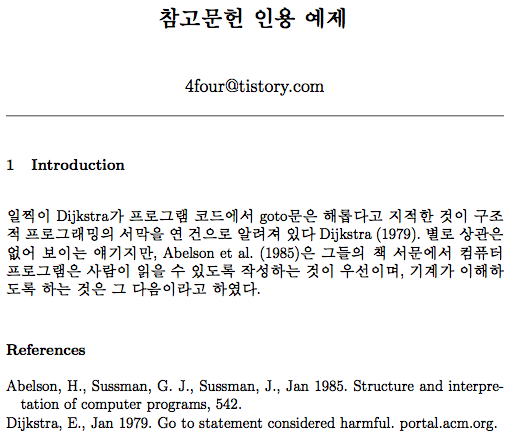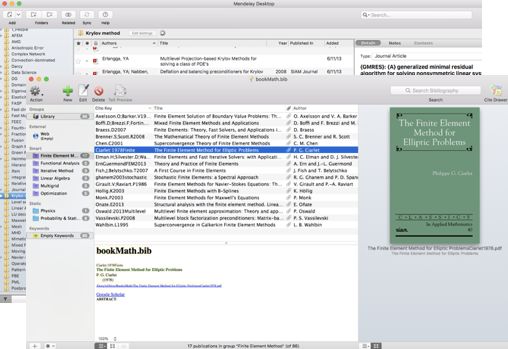
(it will make a backup of the original file: ms.bbl. Use bibtex command as usual to build your.Add entries by copying BibTeX entries to the clipboard.Add entries using the magic right-click-on-ADS-string.Well, I thought about that, but decided I wanted to keep the database in tact, in case I ever want to find someone deep down in the author list (like, say, me). Bibdesk for Beginners John Burt Bibliographies Bibliography Databases LATEX commands for Bibliographies Biblatex and Biber Intro to Bibdesk Bibdesk as a Bibliography Manager Export to Other Formats Brandeis OneSearch (Books) BibDesk as a Research Tool Google Scholar JSTOR EBSCO Databases Using the Library of Congress Bibliography Workow 1.
#Bibdesk as bibitem update
You might ask: why not update the BibTeX database instead.

bbl file and output it with the author entries all fixed up. The ApJ and AJ Journal styles like to have one, two, three, four, or two with “et al.”. There’s just one little problem: the resulting \bibitem entries have all the author names. Voila! Citation is imported from ADS complete with AASTeX journal macros. But you can’t beat the price (free) and it has this really nice feature: highlight any citation string (like 2011AJ….141…19B), right-click, and choose “Add to BibDesk”. It’s a lot like Papers, though with less bells and whistles. That’s when I tried another combination: BibDesk (part of the MacTeX package). Mostly because Papers fetches data from ADS, but doesn’t use the AASTeX macros for the different journal names. But when I put it into practice, exporting to a BibTeX database and importing into an AASTeX manuscript, I was disappointed. For a while I was a big fan of Papers for Macs. Keeping track of citations is a pain, but there are lots of great tools out there for keeping them all straight and eventually importing them into your papers. I’ve now got a winning strategy for citations: BibDesk, AASTeX, and a python script to clean it all up. gfortran has some switches than can help: -fsecond-underscore, -fno-second-underscore, depending on what the error reports and what the symbols are called in the library (use the ‘nm’ or ‘ldd’ command on the library to show it’s contents). This likely has to do with how many underscores (_) are in the symbol name. When linking with external libraries, you may find “symbol not found” errors, even though you know those symbols are defined in the library.Instead of specifying NAME=FNAME, use FILE=FNAME and instead of using TYPE=, use STATUS=. Two commonly used argument names for the OPEN() procedure have changed.Gfortran -ffixed-line-length-none -fdefault-real-8 -std=legacy -fd-lines-as-comments Use the following command-line arguments when invoking the gfortran compiler to get better compatibility:.Now, however, you can’t find an up-to-date g77 compiler very easily and we’re all supposed to start using gfortran.


Lots of friends and colleagues have been happily using g77 as their fortran compiler for years.


 0 kommentar(er)
0 kommentar(er)
